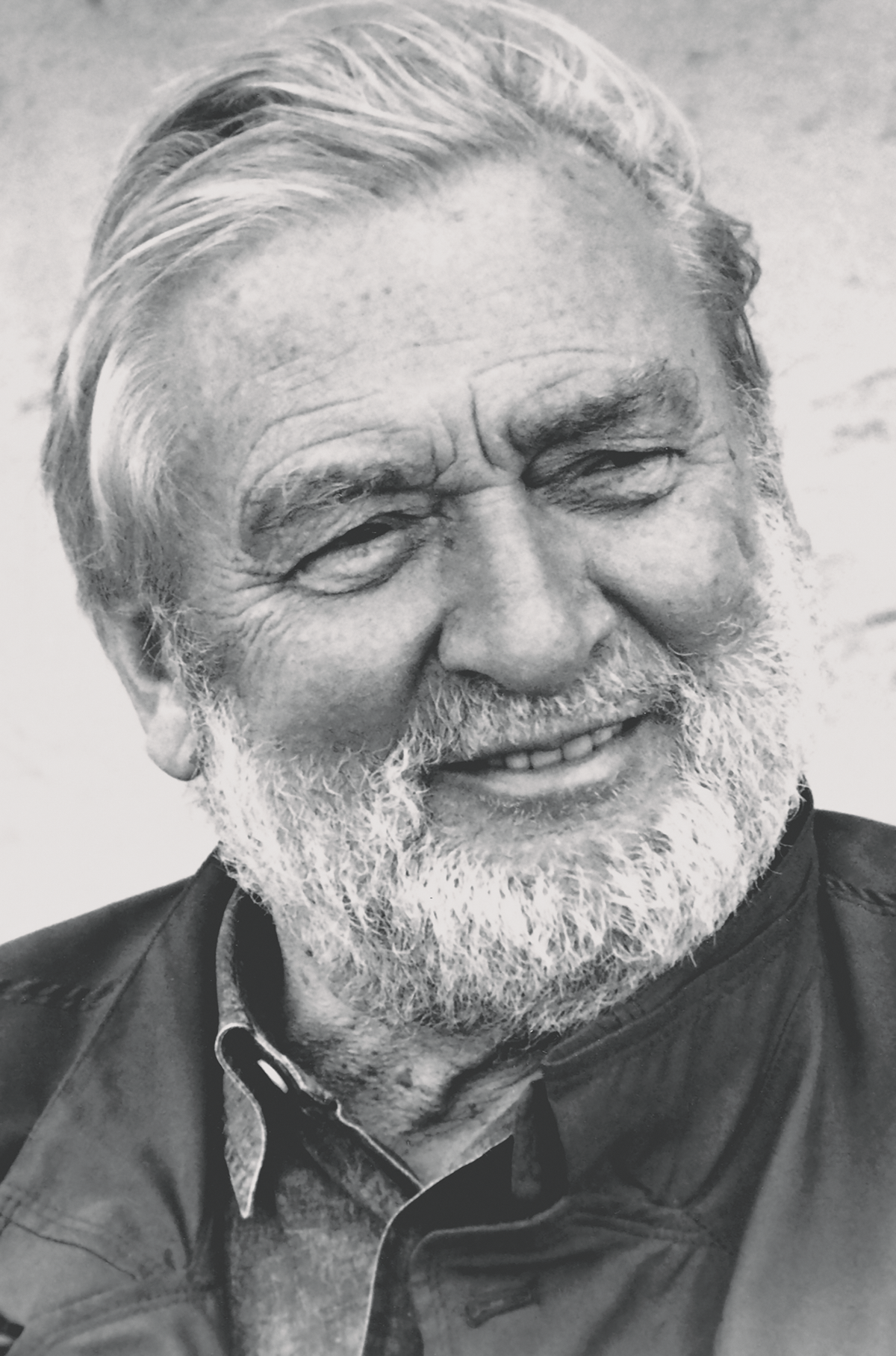
Say the words “Scandinavian design” to most design aficionados and they’ll likely extol the virtues of bare wood, white marble, organic curves and muted palettes—and they won’t be wrong. But they also won’t describe the work of the legendary Verner Panton, the influential Danish designer who traded earth tones for electric hues while becoming a globally renowned style icon.
From the 1960s until his death in 1998, Panton extolled the virtues of Scandinavian design while showing them in a unique light and developing legions of fans in the process. Embodying the concept of timeless design, myriad Panton pieces remain in production today by studios like Louis Poulsen, Vitra and Verpan.
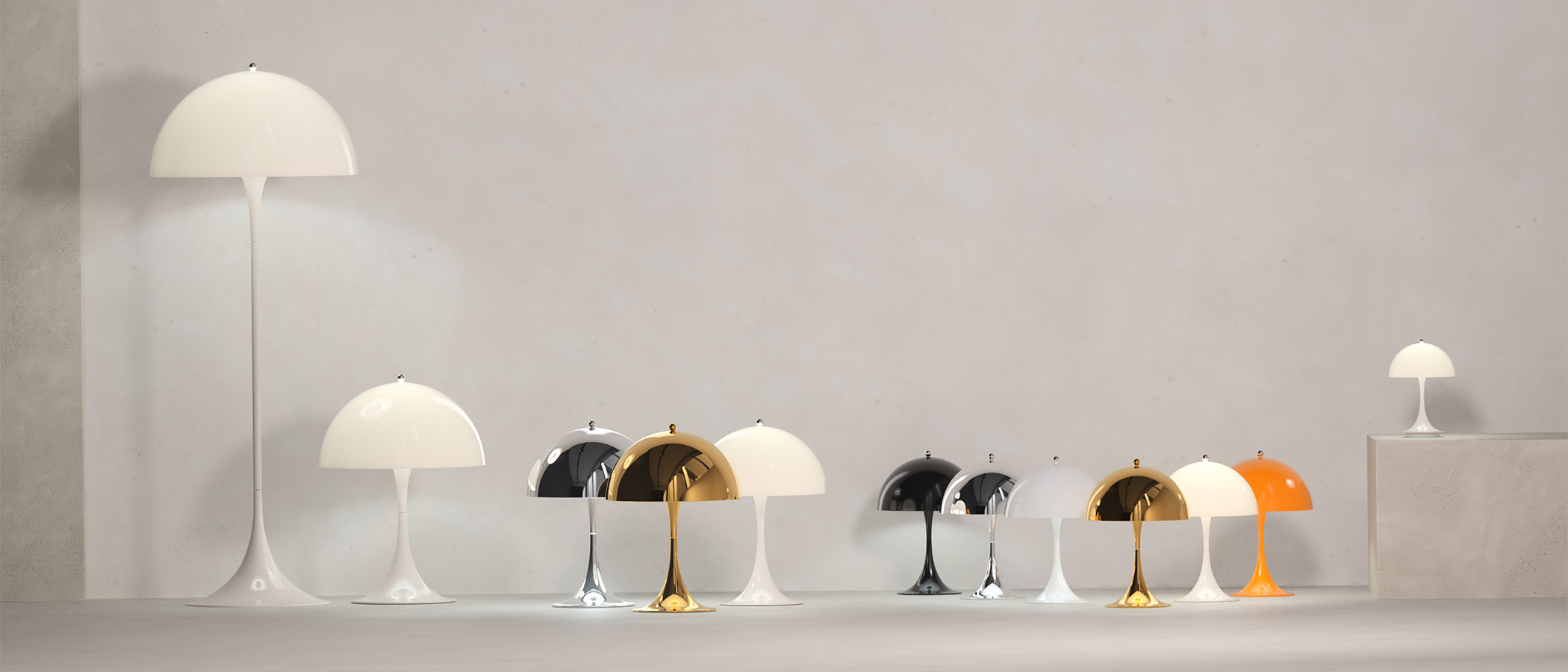
Panton’s upbringing provided a wealth of inspiration for his career as a designer. Born on a small Danish island in 1926, Panton grew up in various inns where his father worked as an innkeeper – unconsciously exposing the young Panton to a range of aesthetics. Childhood dreams of becoming an artist coalesced into architecture studies for Panton at the Danish Art School Odense and eventually the Royal Academy of Fine Arts in Copenhagen.
The Academy and Copenhagen introduced Panton to critical mentors, including Poul Henningsen and Arne Jacobsen. In fact, Panton began his career in Jacobsen’s workshop. Panton only planned to dabble in design before moving on to architecture—a traditional career path at the time—and later said he never learned more from anyone than he did from Jacobsen, who notoriously marched through the workshop revising his apprentices’ designs with a pencil.
But no amount of revisions derailed Panton’s innovative designs. His insatiable drive to create excitement within his environment led Panton to innovate obsessively. After touring Europe in a converted Volkswagen bus, he opened his own design studio in Basel, Switzerland. Combining his respect for Danish modern design and innate curiosity, his colorful, avant-garde work began to take hold.
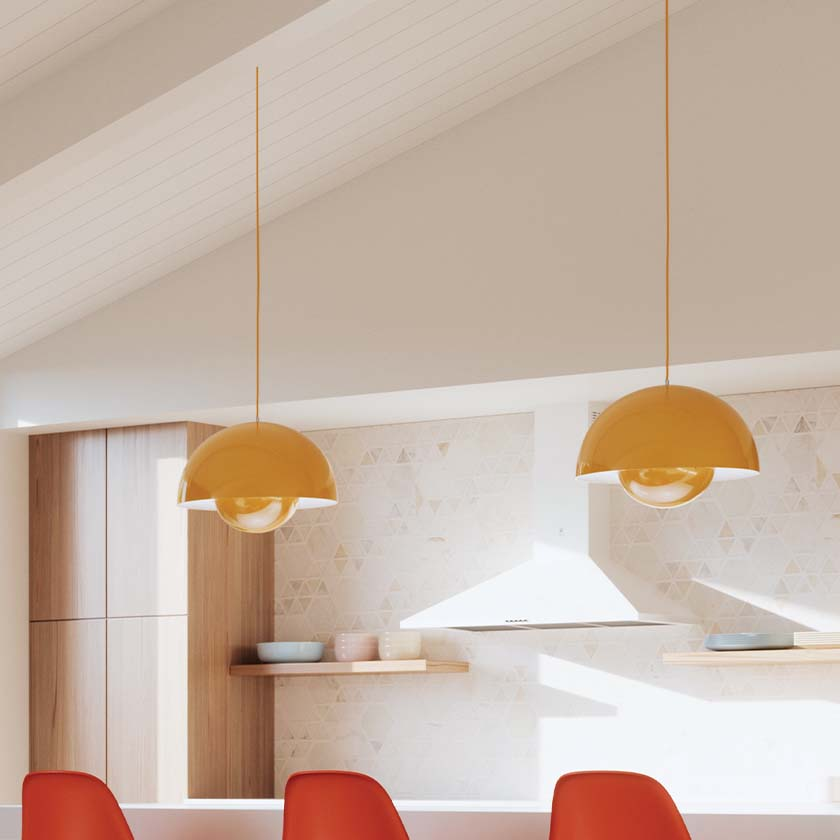
First, Panton embraced novel materials—plastic, plexiglass and rubber—while his contemporaries remained focused on organics. Then, Panton added intense color schemes like vibrant reds and striking cobalt blues, which made his modern furniture stand out even more. Of his choices, he famously said, “The main purpose of my work is to provoke people into using their imagination.”
While notions of excitement and whimsy punctuate the Panton catalog, his designs are also notably sophisticated and superbly engineered in accordance with the tenets of traditional Scandinavian design. Elegant, sinuous silhouettes and carefully considered comfort points are paramount in each product’s design and ensure a lifetime of function, keeping Panton’s designs timeless and classy rather than kitschy.
While he created dozens of lamps, tables, and couches, Panton is best-known for his chairs. Fusing geometric shapes with lightness or plush finishes, his seats tend to define their spaces. Panton began by creating the lightweight, stackable Bachelor and Tivoli chairs before crafting the famed Cone, Heart Cone, and K4 chairs—pieces that became standouts when Panton was hired to redesign one of the inns where he’d lived as a child.
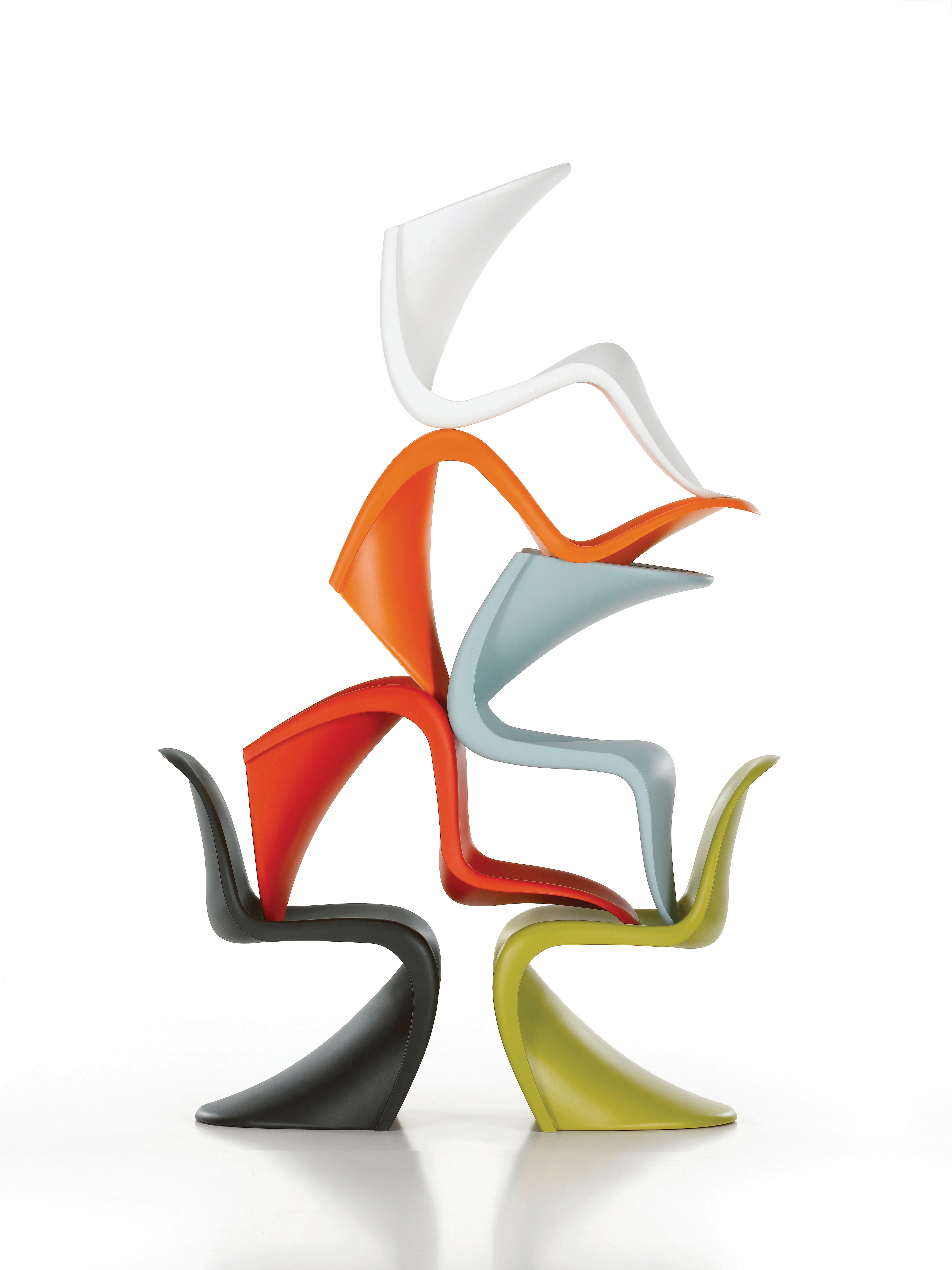
But Panton’s most iconic design is the one that bears his name: the Panton Chair. An extension of his love for novelty and materials, the chair was the first mass-produced seat made from a single piece of molded plastic. Originally conceived as the S Chair, a similar seat made from steam bent plywood, the Panton chair was the result of nearly a decade’s work.
Panton created a prototype in 1962, and spent years searching for a partner to help him produce the design. Eventually, this pursuit led him to Willi Fehlbaum—the founder and CEO of Vitra and a lifelong friend of Panton. Together, the two developed the Panton chair which was first displayed at the 1968 Cologne furniture fair. The striking design instantly drew media attention and fanfare, but remained hard to produce due to its heavy weight and the extensive sanding and lacquering each chair required. Eventually, in 1972 Panton discovered that thermoplastic polystyrene—a new plastic developed by the same Bayer of Aspirin fame—could be used for molding the chairs and eliminated the labor-intensive finishing requirements. At last, the Panton chair could be mass-produced.
The Panton Chair is the perfect metaphor for Panton’s approach to design: Eschewing the simple, organic forms and finishes typical to Scandinavian mid-century design, Panton instead pursued color and novelty. This seamless design is as easy on the body as it is on the eyes: Sturdy and stable, the seat has a bit of give, with comfortable back support and a front contour that keeps the hard material from biting into the backs of knees. Today the Panton Chair remains one of the most iconic chairs of all time.
After the Panton chair skyrocketed Panton to international fame, he continued pursuing his love of color and novelty designing chairs, tables, and floor-to-ceiling spaces in hotels and office buildings across Europe. He even used his own home in Basel as a showroom for decades before retiring in Denmark.
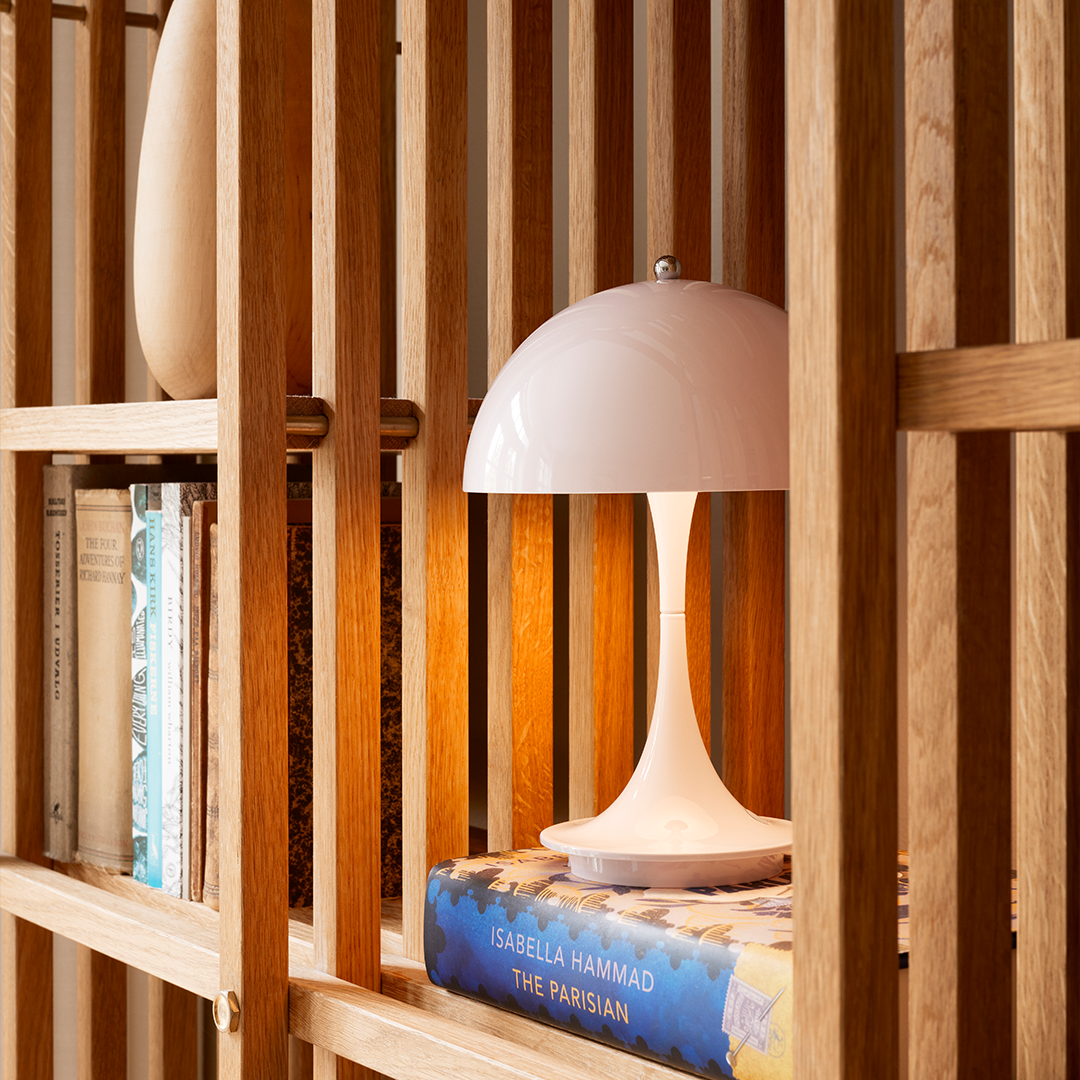
Today, Panton designs are widely produced and beloved for their combination of pop-art flair and effortless balance. Proving Panton was ahead of his time, many of his pieces have become easier to produce in the decades since his death. For example, Louis Poulsen’s mini Panthella collection—released to celebrate what would have been Panton’s 90th birthday—couldn’t be produced with 1970s technology. Made from Panton’s original drawings and in the bright colors of Panton’s final collection Lyset og Farven (Light and Color), the lamp is a smaller version of the Panthella Table Lamp with a painted metal shade. Wherever it stands, the lamp is cheeky yet sophisticated—and quintessentially Panton.
The post Design Retrospective: A Tribute to Verner Panton first appeared on The Edit | Lumens.com.
www.lumens.com










